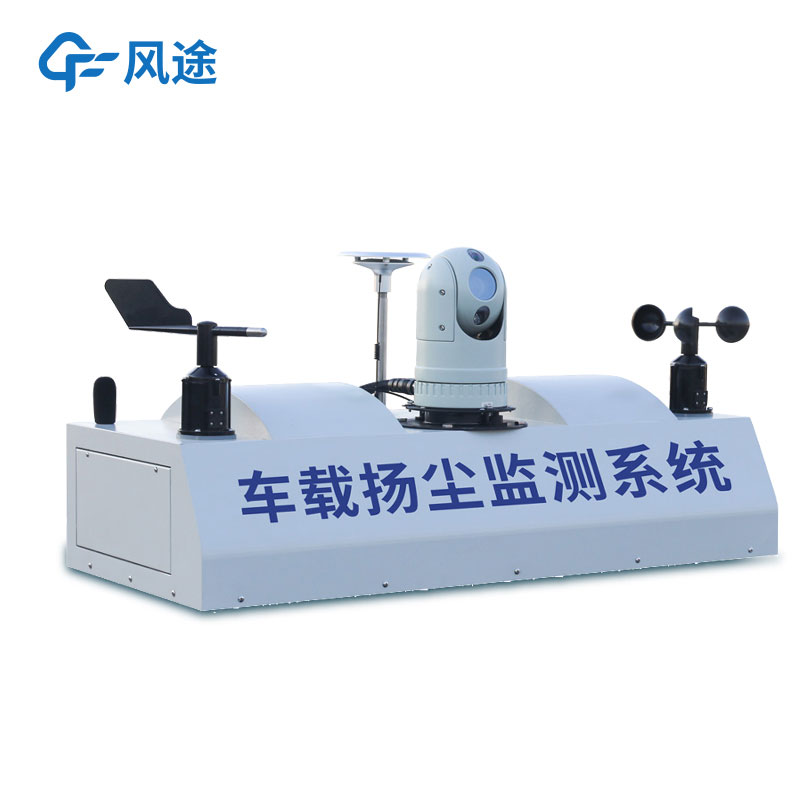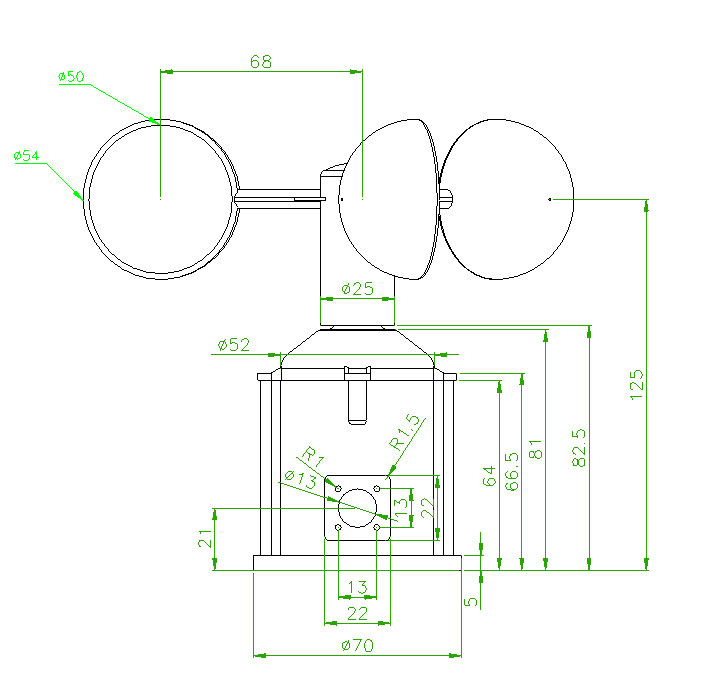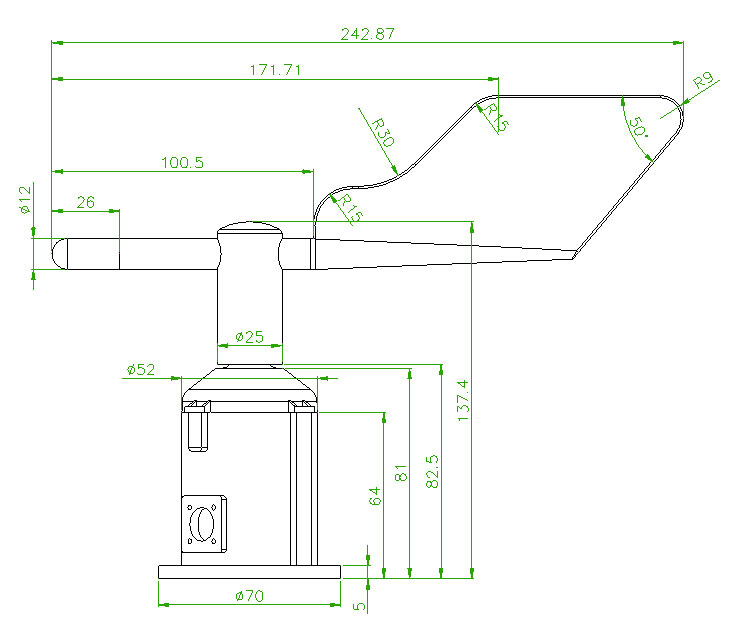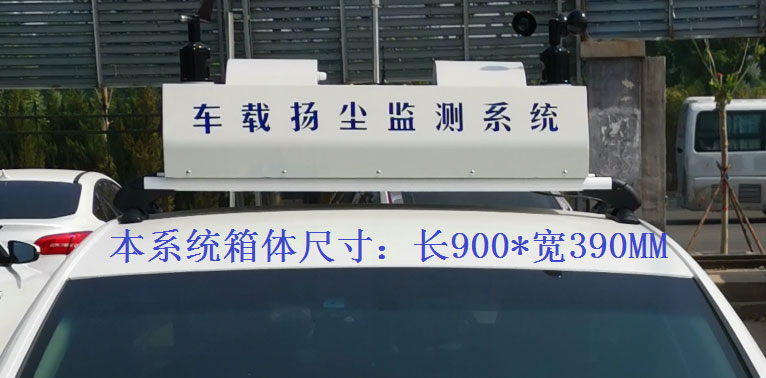Tianqiong Sensor IOT Technology Co., Ltd
Sales Manager:Ms. Emily Wang
Cel,Whatsapp,Wechat:+86 15898932201
Email:info@fengtutec.com
Add:No. 155 Optoelectronic Industry Accelerator, Gaoxin District, Weifang, Shandong, China

Sales Manager:Ms. Emily Wang
Cel,Whatsapp,Wechat:+86 15898932201
Email:info@fengtutec.com
Add:No. 155 Optoelectronic Industry Accelerator, Gaoxin District, Weifang, Shandong, China

Model:FT-ZY1
Brand:tianqiong
1.Introduction to Cruise dust and noise online monitoring system
Cruise dust and noise online monitoring system uses laser scattering method to monitor PM2.5, PM10 and record the concentration level of particulate matter in the air.Cruise dust and noise online monitoring system uses a light scattering fast dust measuring instrument with laser as the light source.The measurement principle is: when light irradiates on particles suspended in the air, scattered light is generated.Under the certain properties of the particles, the scattered light intensity of the particles is proportional to its mass concentration.By measuring the scattered light intensity and applying the mass concentration K value to obtain the mass concentration of the particles.
The instrument can be monitored simultaneously (PM10, PM2.5).A new dust measuring instrument with temperature and humidity compensation, automatic instrument calibration and other functions can effectively reduce the impact of temperature and humidity on the measured value, improve the measurement accuracy in high-humidity climate environments, and continuously monitor particulate matter in the air online.
It has dust sampling, air intake and outlet functions, has filter barrel device, can protect the service life of the air pump, and improve the overall service life of the instrument.It can be continuously monitored in high temperature environments, can work stably and reliably in high temperature environments on the installation site, and can work continuously for 7x24 hours.
2.Cruise dust and noise online monitoring system sensor technical parameters
1.Air temperature, humidity, and air pressure sensors:
1.1 Basic Principles
This series of products adopts a highly integrated temperature and humidity sensor chip, which is calibrated with a digital output with a full measurement range.It adopts patented CMOSens technology to ensure that the product has extremely high reliability and excellent long-term stability.The sensor includes a capacitive polymer humidity sensitive element and a temperature sensitive element made of energy gap material, both of which are designed on the same chip as a 14-bit A/D converter and a serial interface circuit.
1.2 Basic parameters
Air temperature: Measuring range: -40℃-60℃ Resolution: 0.1℃ Measuring accuracy: ±3%
Air humidity: Measuring range: 0-100% Resolution: 0.1% Measurement accuracy: ±3%
Atmospheric pressure: Measuring range: 300~1100hpa Resolution: 0.1hpa Measuring accuracy: ±1hpa
2.Wind speed sensor
2.1 Functional Features
Wind speed sensors are professional meteorological instruments used to measure the horizontal speed of wind.The traditional three-wind cup wind speed sensor structure is adopted.The wind cup is made of ABS material, which has high strength and is also well started with a smooth internal bearing system, ensuring the accuracy of information collection.The built-in signal processing unit of the cup body can output corresponding wind speed signals according to user needs, and can be widely used in meteorological, marine, environment, airports, ports, laboratories, industry, agriculture and transportation fields.
2.2 Technical parameters
Measuring range: 0-32.4m/s Accuracy: ±0.3m/s Starting wind speed: 0.2-0.4m/s
Supply voltage: 7-24v DC
Output signal: 4-20mA
Wind speed value = (output voltage -0.4)/1.6*32.4
2.3 Appearance dimensions and installation instructions

2.4 Fixed method
Using the flange installation method, the threaded flange connection makes the lower pipe fitting of the wind speed sensor firmly fixed to the flange.The chassis Φ70mm, four Φ5mm installation holes are opened on the circumference of Φ61mm, and bolts are used to fix it tightly on the bracket to keep the entire set of instruments at the optimal level, ensuring the accuracy of wind speed data, and the flange connection is easy to use and can withstand greater pressure.
3.Wind direction sensor
3.1 Functional Features
Wind direction sensors are professional meteorological instruments used to measure the horizontal wind direction of wind.It uses a Hall angle sensor inside, and a low-inertia light metal wind vane is used to respond to the wind direction.When the wind direction changes, the tail wing rotates through the shaft to drive the shaft core magnet to rotate, thereby outputting a changing voltage signal.It can measure the natural wind direction of 0-360 degrees starting from the north of the label, and has a high cost-effectiveness.It can be widely used in meteorology, oceans, environment, airports, ports, laboratories, industry, agriculture and transportation fields.
3.2 Technical parameters
Measurement range: 0-360 degrees: (0.4V, or 4MA corresponds to 0 degrees, north direction)
Accuracy: ±1°
Starting wind speed: 0.3m/s
Supply voltage: 7-24v DC
Output signal: 4-20mA
Wind direction value = (output voltage -0.4)/1.6*360
3.3 Appearance structure

3.4 Fixed method
Using the flange installation method, the threaded flange connection makes the lower pipe fitting of the wind direction sensor firmly fixed to the flange.The chassis Φ70mm, four Φ5mm installation holes are opened on the circumference of Φ61mm, and bolts are used to fix it tightly on the bracket to keep the entire set of instruments at the optimal level, ensuring the accuracy of wind direction data, and the flange connection is easy to use and can withstand greater pressure.
Note: During installation and commissioning, please point the arrow on the column to the actual north (with the help of the compass), and a white label with a black arrow printed on the black wind sensor;
4.Pump-suction PM2.5, PM10 sensor:
Supply voltage: DC12V
Maximum power consumption: (current 2.5A) about 30W
Output method: RS485 (Modbus)
Monitoring principle: laser scattering
Dehumidification principle: Heating and dehumidification
Air pump flow: 2L/min
Size: 230x175x90 (length, width and height)
Weight: Approximately 1.85kg (without filter element)
Monitoring indicators:
PM2.5 Measurement range: 0-999ug/m³ Resolution: 1ug/m³ Measurement error: ±10%
PM10 Measurement range: 0-1999ug/m³ Resolution: 1ug/m³ Measurement error: ±10%
TSP measurement range: 0-4999ug/m³ Resolution: 1ug/m³ Measurement error: ±10%.
Noise Measuring range: 40db~130db Resolution: 0.5db Measuring error: ±5% Frequency range: 10-20KHz;
5.LED:
General configuration, outdoor P8 monochrome LED single line display

6.Collector parameters:
This data collector adopts contemporary microelectronics technology to record, store and display the operating sensor data, which has the characteristics of reliable work, simple operation, easy data collection and computer analysis.The collector can directly store the collected data on a normal USB drive.After the data collection is completed, the user can directly insert the USB flash drive into the collector to extract data.
Power supply: DC12V/DC
Sensor communication: RS485 Modbus protocol
Network data: GPRS transmission
Internal clock: manual calibration
Data storage: automatic, maximum 160,000 pieces
Storage interval: 60-65535 can be set.Unit: seconds
RS485 interface: DB9 pin
Data export: USB port, 485 port connected to computer, website download
Meteorological Instruments for Solar Energy is a professional device that integrates the monitoring functions of six key meteorological parameters: temperature, humidity, wind speed, wind direction, air pressure, and rainfall. Its core highlight lies in its highly integrated and ingenious design. It...
The microclimate of farmland refers to the small-scale climatic environment formed by the interaction among the surface air layer, soil layer and crop population in the farmland. It is reflected by the values of agricultural meteorological elements such as radiation, air temperature and humidity, wi...
The Portable el detector is an important device used to detect various defects in photovoltaic (PV) cell modules. It can accurately detect defects such as hidden cracks, fragments, and poor soldering in PV cell modules. These internal defects can seriously affect the service life and long-term power...
In the modern industrial field, the chemical industry has an extremely high demand for meteorological monitoring. The chemical production process is complex and involves many flammable, explosive, and corrosive chemical substances. For example, in a chemical industrial park, under different meteorol...